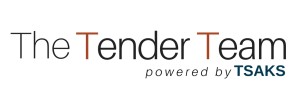Tenders and bids are an excellent opportunity for small businesses to grow and secure government and private contracts. Writing a winning tender or bid takes effort, organisation and access to subject matter experts (or knowledge of your own business and operations). Here are six tips to write a wining tender:
Use the active voice
It’s important to use the active instead of passive voice when writing your tender response. You must write with confidence and boldly declare what you will deliver to the client. For example, its best write:
‘We will deliver you a quality service by leveraging on our extensive experience.’.
This is stronger and more convincing than writing:
‘XXXXX can deliver you a quality service. We are experienced in this area.’
It is equally important to write with confidence. You must demonstrate to the reader that you are confident in your offering and that you are a credible service provider. Talking about your implementation plan and how you plan to manage the relationship over the longer term reflects that you are confident you can deliver over the longer term. Of course, you need to be mindful of appearing arrogant.
Go into detail where possible
Don’t confuse going into detail with waffle. It’s important to be concise in your writing for both government bids as well as private organisations. It’s also important to go into detail in order to clearly articulate the breadth and depth of your capability and experience to deliver the contract.
For example, lets assume you are a small plumbing business ‘Plumb Plumbing’ that is bidding for a panel contract with a local Council. A response filled with waffle may look like this:
‘Plumb Plumbing is a local plumbing business committed to quality and service. We ensure we always deliver a quality job, and provide a highly responsive service. We can attend Council properties at any time, and will always make it our priority to attend quickly. Furthermore, our team take their roles and jobs very serious which ensures Council will always get a quality result.’
There is a fair bit of waffle in the above statement, and very little facts and figures. The following is more appropriate:
‘Plum Plumbing is a local plumbing business with a passion for providing a responsive service with quality work. Our team has a combined 35 years plumbing experience and all live locally within the local government area. Our emergency response service ensures we have a maximum 1 hour call-out time and ensures we are a quality proposition for inclusion on Councils panel.’
It’s also important to go into detail where appropriate. For example, if the tender asks for your previous experience you need to go beyond simply listing the experience with a short description. Talk about the length of the contract, what unique challenges were overcome, what was the value of the contract, and which members of your team delivered the contract. Going into detail gives you a chance to show your expertise and experience and further convince the reader to appoint you.
Stay organised
It’s important to be organised from the start. Tenders and bids can get out of control quickly. When the tender is released, it’s a great idea to develop a checklist of what is required and what needs to be included in terms of attachments and supporting documentation. As you complete a response in draft form, update your checklist to show what is in draft and final form. Where supporting documentation such as insurance documents and other documents is required, get organised and gather the documents early so you can start ticking off the items on your checklist.
Graphics and infographics
Graphics and infographics are becoming increasingly important for tenders and bids, in fact, they are almost the norm. Therefore, it’s critical to introduce them where possible in order to put forward a credible and development document that has a consistent look and feel. To take it one step further and incorporate winning tenders, it is important to design infographics that convey real meaning and deliver a clear message. Infographics are excellent for communicating complex solutions in a simple easy to understand manner. Microsoft Powerpoint is a great tool to design infographics that most small businesses have access to.
Develop win themes and stay client-focused
It’s often tempting to develop win themes that are self-focused. Remember you need to focus on the client and their needs. You may want to talk about how your business has offices in three states, however, a client may only be concerned with what you will provide them in their local area.
Therefore, it’s important to develop win themes that are consistent through your document and provide a nice fusion between your capability and what the client may be looking for. For example, let’s go back to the example of a local Council. A key win theme for our Plumb Plumbing business may be the fact that they are a local plumbing business.
All of their employees live locally, and they purchase from local suppliers. Their apprentice is a local boy who went to the local school and they service a lot of clients in the local area. This is an excellent win theme because local government generally puts a lot of focus on local service providers.
Draft a quality executive summary
Executive summaries are absolutely critical. You need to spend the time to ensure it is punchy and concise. Your executive summary must clearly articulate your win themes, introduce your key personnel and account manager, and convince the reader or members of the procurement panel that you are the right supplier to deliver on the contract.
For any other assistance, consider employing the services of an expert tender writing consultancy like us!
Jason Cooney is the Director of The Tender Team
and Tsaks Consulting
Tsaks Consulting helps businesses small and large writing winning tenders, bids and proposal content. Jason is based in Sydney and helps businesses across Australia, New Zealand and in the United Kingdom.




